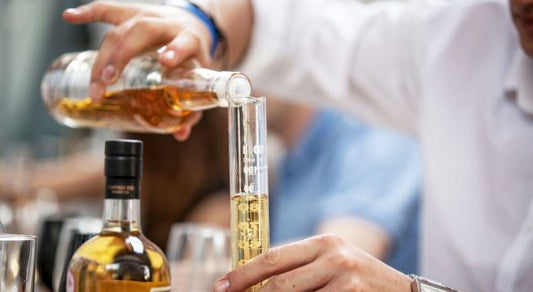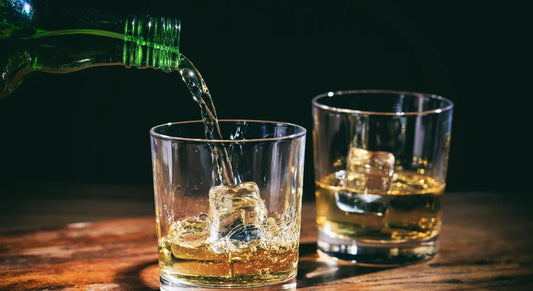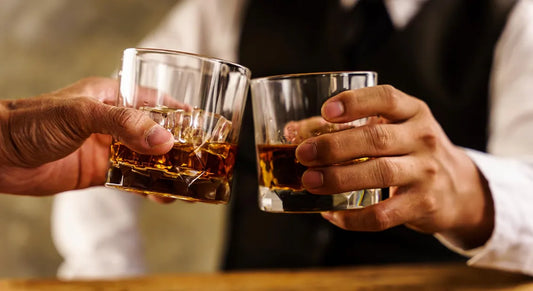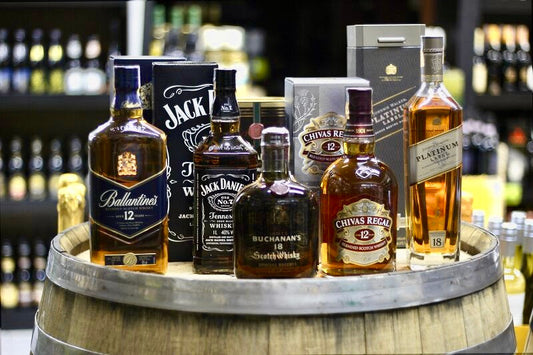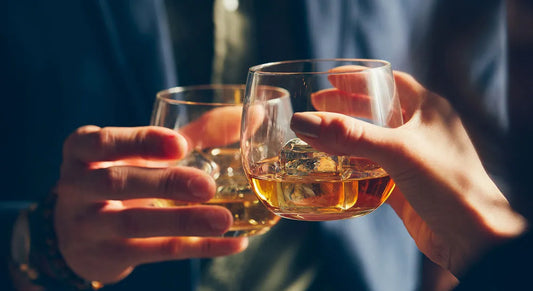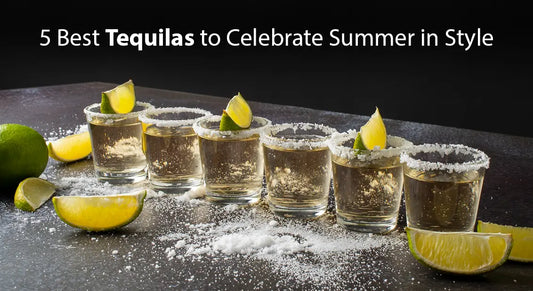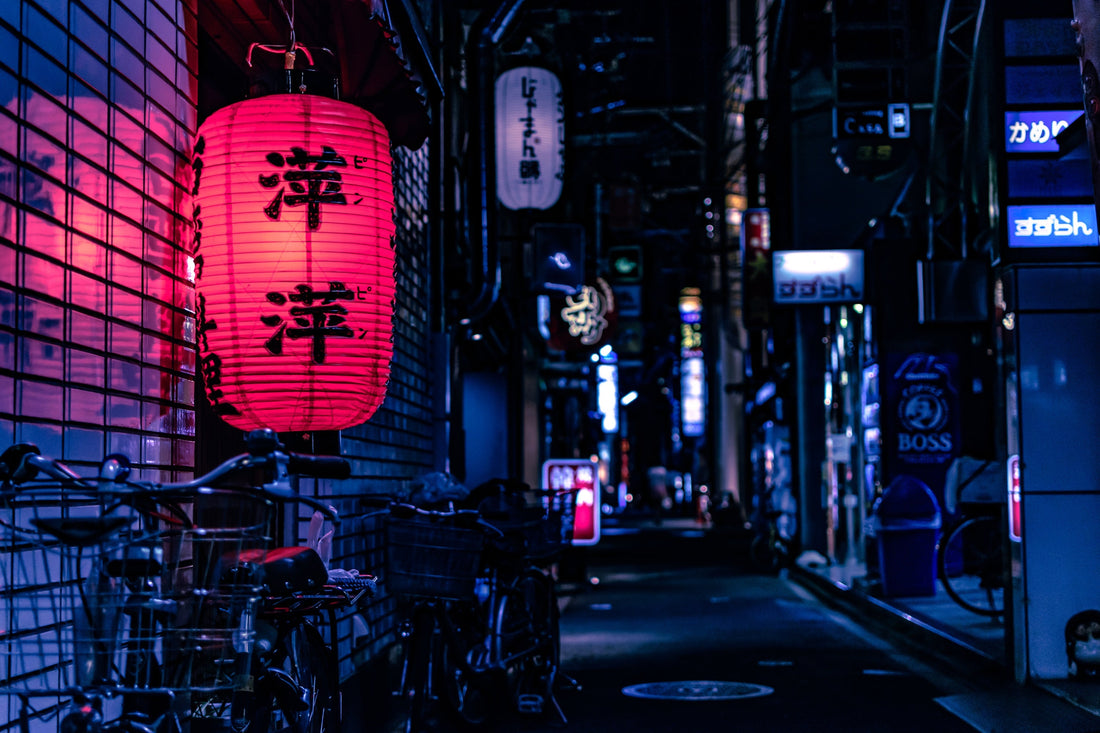
4 Whiskies from Japan You Have to Try
There can be little doubt: Japanese whisky is now considered amongst the very finest in the world.
Since 2001, when Nikka Whisky’s Yoichi 10 Year Old won the Whisky Magazine’s blind-tasting ‘Best of the Best’ award, Japanese whiskies have had a trophy-laden few decades. But with the industry in boom, and new expressions hitting the market all the time, it can be hard to know where to start when it comes to drams from the Land of the Rising Sun.
Thankfully, we’ll point you to some of our favourites, while explaining the history of Japanese whisky and what makes it so delicious!
A Brief History of Whisky In Japan
For centuries, Japan was a “closed” country: isolated from the world, with foreigners barred from entering, and Japanese people prevented from leaving on pain of death. This all changed in 1853, when Commodore Perry of the US Navy arrived in Japan in his famous black ships – a show of gunboat diplomacy which successfully opened the nation’s ports to US merchants in 1854. In Perry’s cargo were 110 gallons of American Whiskey, plus an extra barrel for good measure – a gift intended for the emperor and his subjects, but apparently purloined by the shogun’s guards. Either way – history had been made. Japan was open, and had a taste for whiskey!
For the next 60 years or so, Japanese “whisky” was rather murky in quality and character. Imitations of Scotch and other spirits were produced at chemical plants, using all manner of additives, spices, perfumes and colourants to try to recreate what whisky possesses naturally. Importantly, though, two of the giants of Japanese whisky history cut their teeth in such businesses: Shinjiro Torii and Masataka Taketsuru.
Masataka Taketsuru and Shinjiro Torii, colleagues turned rivals.
 These dapper gents are Taketsuru and Torii
These dapper gents are Taketsuru and Torii
Taketsuru began work at the precursor to Suntory and alongside Torii established Yamazaki Distillery, Japan’s first dedicated whisky distillery. After completing a ten year contract, he left to found Yoichi Distillery in Japan’s northern island of Hokkaido, which he believed to be most similar to Scotland in climate. Whilst waiting for his whisky to be produced and matured, he sold apple juice. Eventually, Taketsuru’s first expression hit the market, named “Rare Old Nikka Whisky” was released – later giving its name to the company as a whole. The rivalry between Suntory and Nikka had begun.
Taketsuru and Torii are regarded as “The Godfathers” of Japanese whisky. Together, they can be credited with laying the foundations of the gigantic Japanese whisky industry we know today. Taketsuru’s story is particularly interesting – he travelled to Scotland in 1918 to study chemistry, and learn the Scots’ ways of whisky, eventually completing an apprenticeship at Longmorn distillery and another at Hazelburn. Taketsuru returned to Japan, armed with a knowledge of Scottish whisky distilling, and newly married to a Scottish woman, Rita Cowen (whose own story is worth reading…)
Over the years, other distilleries have been constructed, and other companies have entered the market, but Japanese whisky remains dominated by the duo of Suntory and Nikka. Explore more refined and delicate Japanese whisky options in our dedicated collection.
What makes Japanese Whisky different?
Clearly modelled on the Scotch distilling tradition (pot stills, double distillation and malted barley are all preferred), Japanese whisky is often made using barley imported from Scotland. However, there are some crucial differences between spirit produced here, and that made in whisky’s homeland. Japanese whisky is a product of the unique and diverse environments and climates found in the island nation, with imposing mountain ranges, cooler coastal regions and tropical rainforests all found in Japan. The climate has an effect on the production of whisky, slowing or accelerating the maturation process, whilst environment pressure is also said to change distillation of spirit itself.
There are production differences too: in Japan, some distillers have maintained the practice of direct-fired stills, that is stills heated with naked flame, be it fuelled with coal, fire or gas. In Scotland this has nearly died out (with the exceptions of Glenfarclas, Glenlivet and Glenfiddich). Direct-fired whiskies are said to be weighty and more complex. Diverging approaches to business have also produced a unique Japanese style. Whilst in Scotland it is common for blenders and whisky companies to purchase spirit from one another, in Japan this very rarely happens, meaning that Nikka and Suntory maintain different distilleries in different locations to produce a variety of whisky. Until recently, Japanese distillers could also buy spirit from overseas and use it in blended “Japanese” whiskies – read more on that here…
Finally, Japanese distillers use different casks. In Scotland, Bourbon and Sherry barrels are overwhelmingly the choice for maturing whisky. In Japan, these casks are also used, but it’s not unusual to see Mizunara Japanese oak casks (notoriously leaky and difficult) in operation. There have even been whiskies aged in shōchū or sake barrels, and one of Japan's most famous brands, Hibiki, is partly aged in plum liqueur casks.
Now you’re up to speed on Japan’s drams, it’s time for us to take a look at our personal faves!
Found close to Japan’s “inland sea” Akashi White Oak, made at Eigashima Distillery, is one of the rising stars of the nation’s whisky industry. The Blue Label expression is a high quality blended whisky, which has been aged initially for five years in Shochu American oak barrels, before a finishing period of two years in former Sherry casks. The coastal location imparts a rare maritime tang to this whisky, which boasts flavours of vanilla-oak, malt and caramel.

A remarkable single malt from Miyagikyo, Nikka’s second distillery after Yoichi. Founded in 1969, Taketsuru apparently happened on the location by chance, and immediately saw its potential for whisky-making. Incredibly picturesque, Miyagikyo can produce a wide variety of spirit, but is generally softer than the peated Yoichi. This dram is largely matured in Sherry casks, and serves up notes of lemon cake, spice and dried fruits.
Now, a dram from Nikka’s arch-rivals, Suntory. Like Miyagikyo, Hakushu also has a claim for being the most picturesque distillery in Japan. Known as the “mountain forest distillery”, Hakushu is found high in the misty peaks of Japan’s Southern Alps. This higher altitude reduces the pressure during distillation, which is said to produce the spirit’s lighter style. Unlike many Japanese whiskies, Hakushu has a distinct tang of peat, which only adds to the complexity of this dram.
An example of the Japanese “World Blend” style, and also a bottling from a modern distillery outside the Nikka-Suntory Duopoly. This expression contains spirit from America, Canada, Ireland, and Scotland, alongside malt whisky made at the beloved Chichibu distillery. Tonnes of soft stone fruit and cereal sweetness are the order of the day here. You can also sample a whisky tasting kit that includes select Japanese expressions.



